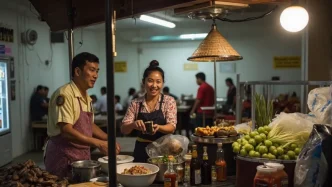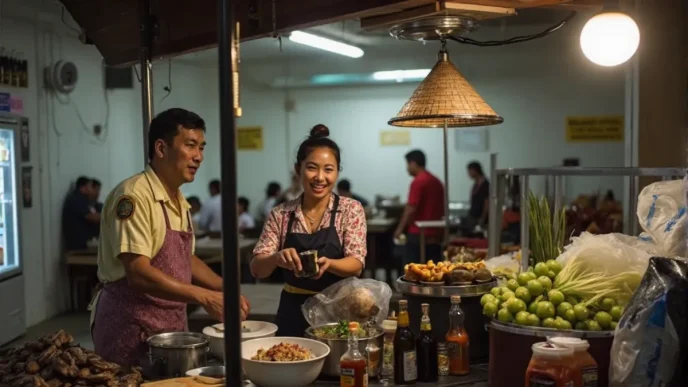– Across South East Asia, a wave of political change is stirring, with governments and opposition groups alike navigating complex reforms, public sentiment, and regional pressures. From Thailand’s evolving constitutional debates to Vietnam’s cautious steps towards economic and political adjustments, the region stands at a pivotal moment that could redefine its governance and international standing.
Thailand: Constitutional Crossroads
In Thailand, discussions around constitutional amendments have gained momentum, with lawmakers and activists pushing for changes to address long-standing issues of representation and power distribution. The current charter, drafted under military oversight following the 2014 coup, has been criticised for entrenching elite control and limiting democratic participation. Proposed reforms, if enacted, may reshape the balance between the monarchy, military, and elected officials—a delicate issue in a nation where such topics are deeply sensitive.
Public sentiment, as reflected in recent gatherings in Bangkok and online discussions, suggests a growing appetite for change. However, any shift must navigate Thailand’s intricate political landscape, including the influence of powerful institutions. Analysts caution that reforms, if rushed or poorly managed, could exacerbate tensions rather than resolve them. As one commentator noted, “The question is not just what changes, but how they are perceived by all stakeholders”).
Beyond the capital, voices from regions like Isaan highlight economic inequality as a core driver of political frustration. Farmers and workers argue that systemic issues—access to resources, land rights, and fair wages—must underpin any constitutional dialogue. If reforms fail to address these grassroots concerns, public support could wane, potentially destabilising the process.
Vietnam: Balancing Reform and Stability
Meanwhile, in Vietnam, the Communist Party of Vietnam (CPV) faces its own set of challenges as it balances economic modernisation with political control. Recent policy announcements from Hanoi suggest a willingness to explore limited reforms, particularly in state-owned enterprises and foreign investment regulations. These moves, if confirmed, may signal a shift towards greater integration with global markets—a priority as Vietnam seeks to solidify its role in regional trade networks like the ASEAN Economic Community.
Yet, such steps come with risks. Analysts suggest that opening up economically could invite demands for political liberalisation, a prospect the CPV has historically resisted. Public discourse, while tightly managed, reveals cautious optimism among urban professionals and entrepreneurs who see reform as a path to prosperity. In rural areas, however, concerns linger over land disputes and the uneven distribution of economic gains. The Vietnam Fatherland Front, a key political coalition under CPV leadership, has been tasked with gauging public opinion—a process that could shape the pace of change.
Speculative reports of internal debates within the CPV over the scope of reform remain unverified. If true, they might indicate a rare fissure in the party’s united front, though no evidence confirms such divisions at this stage. For now, Vietnam’s leadership appears focused on maintaining stability, with any reforms likely to be incremental rather than transformative.
Regional Dynamics and Geopolitical Stakes
South East Asia’s political shifts do not occur in isolation. The region remains a geopolitical chessboard, with major powers like China and the United States vying for influence. Thailand’s constitutional debates, for instance, are watched closely by both allies and rivals, given the country’s strategic position and history of military cooperation with Washington. Similarly, Vietnam’s economic policies could tilt the balance in regional trade disputes, particularly as tensions simmer in the South China Sea.
ASEAN, as a collective, faces pressure to mediate these internal and external forces. Political instability in one member state can ripple across borders, affecting everything from migration to investment. If Thailand or Vietnam stumbles in managing their respective transitions, the fallout could test ASEAN’s cohesion at a time when unity is critical to counter external pressures.
Moreover, climate change and economic inequality—issues often sidelined in political discourse—add layers of complexity. In Thailand’s southern provinces, flooding exacerbated by environmental degradation has displaced communities, fuelling calls for governance that prioritises sustainability. In Vietnam, rapid urbanisation strains infrastructure, raising questions about whether reforms will address long-term resilience or focus solely on immediate gains.
Public Sentiment and the Path Ahead
Across both nations, public sentiment serves as both a catalyst and a constraint. In Thailand, younger generations, galvanised by social media, demand accountability and inclusivity, often clashing with traditional power structures. In Vietnam, a burgeoning middle class seeks greater voice, albeit within the confines of the existing system. How leaders respond to these aspirations will likely determine the success or failure of their political agendas.
The stakes are high. If reforms in Thailand lead to a more equitable system, they could inspire similar movements across the region. Conversely, failure to deliver could deepen disillusionment, potentially sparking unrest. In Vietnam, the government’s ability to modernise without compromising its ideological core remains a delicate balancing act. Missteps could undermine public trust, even if economic indicators improve.
Analysis: A Region at a Turning Point
South East Asia’s political landscape in 2025 reflects a region grappling with its past while eyeing an uncertain future. Thailand’s constitutional journey, if navigated with transparency and inclusivity, may offer a blueprint for reconciling historical divides. Vietnam’s cautious reforms, meanwhile, highlight the challenges of adapting a single-party system to a globalised world. Both nations face the same fundamental question: can change be managed without fracturing the social and political fabric?
Speculative outcomes abound. If Thailand’s reforms reduce structural inequalities, they might bolster democratic legitimacy, though this remains contingent on elite buy-in. If Vietnam’s policies attract significant foreign investment, economic growth could accelerate, though at the potential cost of social cohesion if disparities widen. These scenarios, while plausible, are not guaranteed—policymakers must tread carefully to avoid unintended consequences.
What is clear is that the region’s trajectory hinges on more than just policy. Cultural nuances, historical grievances, and economic realities all play a role. For Thailand, the monarchy’s symbolic and practical influence cannot be understated. For Vietnam, the CPV’s grip on power remains both a stabilising force and a potential lightning rod for criticism. Understanding these dynamics is essential for any meaningful reform.
Conclusion
As South East Asia stands at this crossroads, the coming months will be telling. Thailand and Vietnam, though distinct in their challenges, share a common need for governance that reflects public will without sacrificing stability. Whether through constitutional amendments or economic recalibration, the path forward demands dialogue, compromise, and a keen awareness of regional and global currents.
For now, observers can only watch and wait. The decisions made in Bangkok and Hanoi will not only shape national destinies but also influence South East Asia’s role on the world stage. At this pivotal moment, the region’s leaders have a rare opportunity to redefine their political legacies—if they can rise to the challenge.














